Day 5 - Lisbon to Evora
Well, we thought we would have a relaxing traveling day, but it was not to be. Pretty fun though. After an early start, getting our luggage out, etc., we left the wonderful Corinthian Hotel for our bus ride from Lisbon. Passing sights we had seen, and some we hadn’t (like the imposing Roman Aqueducts), we saw the countryside change from urban sprawl to farm country. We got our first glimpse of cork trees (a major product in Portugal), finding the white painted year they were stripped of their bark near the bottom. Despite the fact that people think they are being decimated, quite the opposite is true - the bark grows back so they can be harvested every 9 years, and their life span is well over 100 years, although you can’t really start harvesting them until they are at least 20 years old.
Our first stop was in a wonderful little medieval walled town called Monsaraz.



Climbing up towards the city gates, we explored all three of its major streets. The full-time population is only 150 people! The town, complete with a castle now converted to a Portuguese bullfighting ring, has an ancient history. It was in a strategic location and was fought over and occupied by Moors and Christians for centuries until the Knights Templar permanently liberated it in the 13th century.
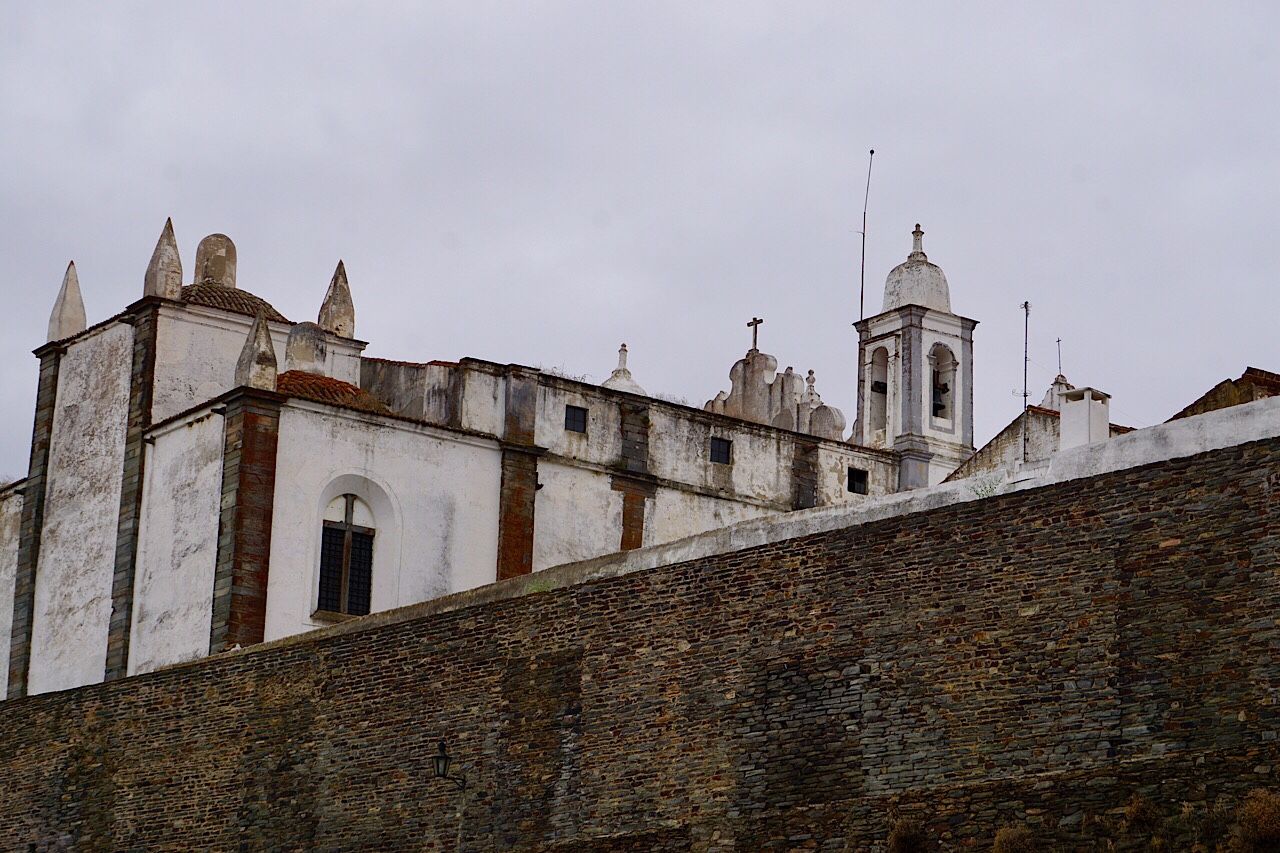


After a family style lunch at one of the 3 restaurants in town, we had a little time for pictures of the beautiful olive and grape vineyards in the distance, among other lush countryside, river and farmland. Also loved the tiny doors.
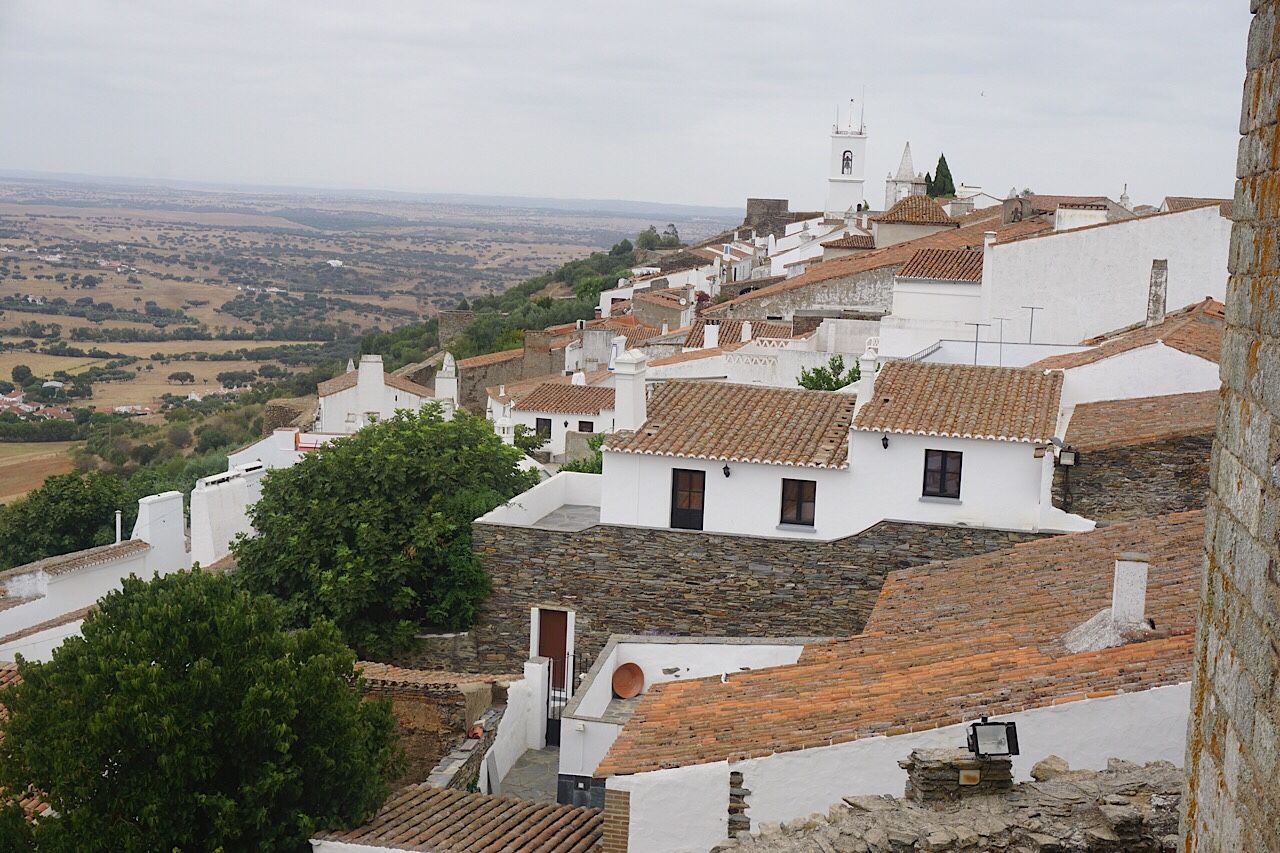
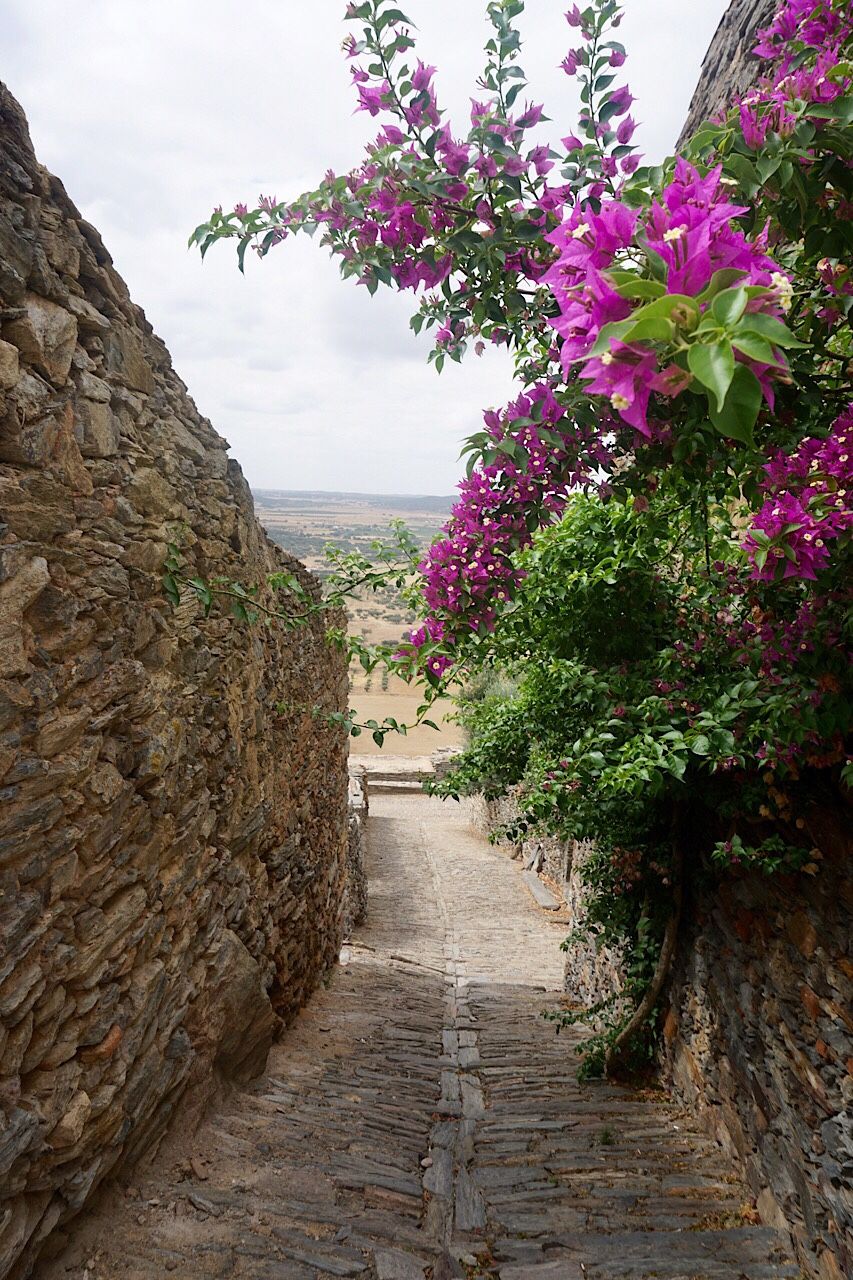

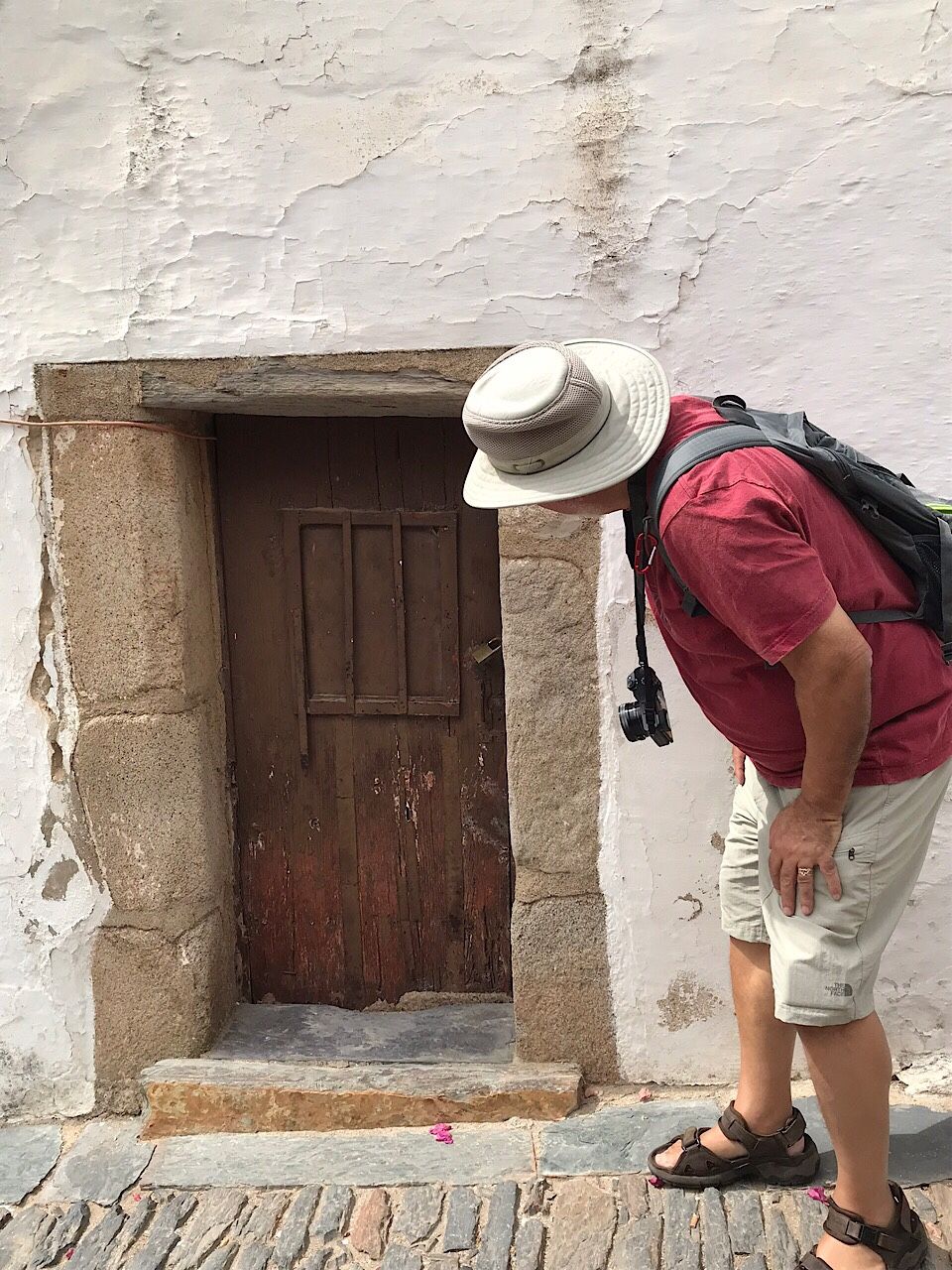
En route to our next stop we made a brief detour to view an ancient rock structure known as Cromlech do Xerez. Dating from 2500-3000 BCE, this is smaller of two prehistoric megaliths in the region. The meaning and purpose of it is not known, however it is interesting to note that it is not in its original location. The original spot was flooded to build a dam, and the rocks were relocated to this area maintaining there original positioning.

Onto our next stop was the local winery, Esporão, in the Alentejo region. This is such a huge winery, largest in Portugal with over 50,000 acres. They also have olive groves, and a relatively new beer-making facility in other nearby areas.
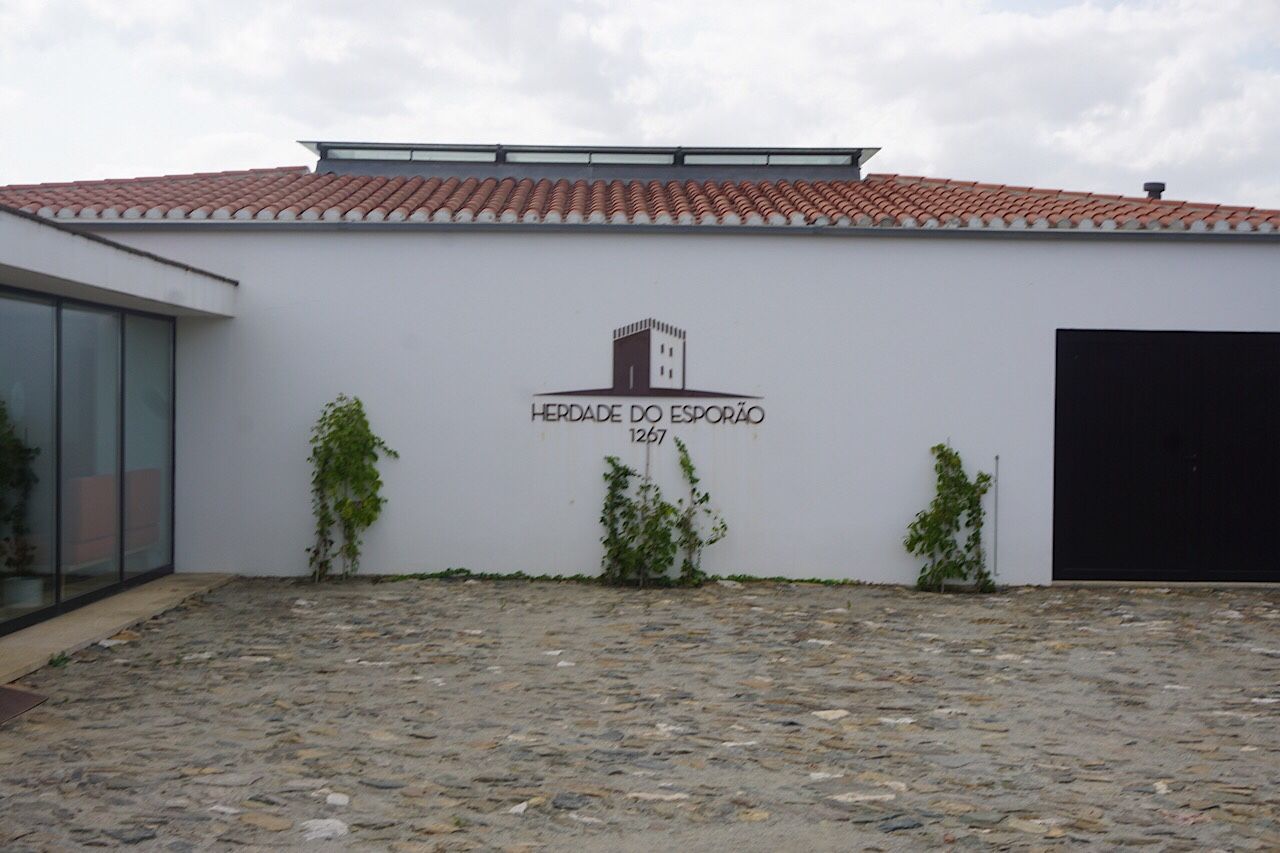
Paolo, a very knowledgeable employee took us down to the first area where there are the usual steel tanks.


They also store just a little wine in original Roman clay casks to maintain the tradition of this ancient method of production. In that vein, some of their premium wines are still initiated by real foot-stomping (ala "I Love Lucy"). We volunteered, but, alas, they weren’t doing those today😥.


The cellars were next. When asked what they do with old barrels, he pointed to a "tasting table" that was huge, including a section that was hanging above the table made entirely out of old barrels. So is the ceiling in the tank room.
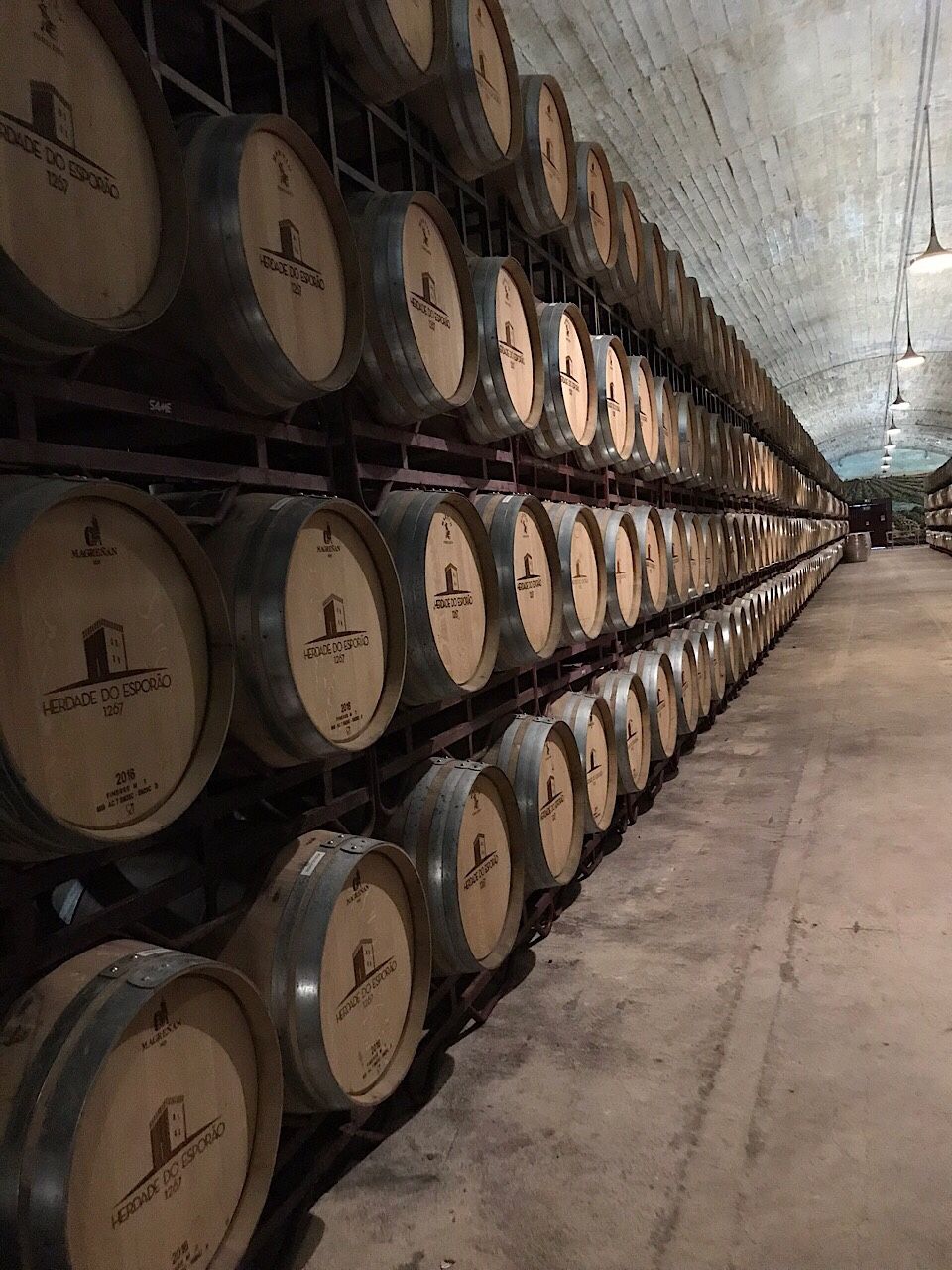

Lastly, of course, we had a tasting, one red, one white. They carry 31 kinds of wines, but the ones we tried weren’t anything special. The tour was excellent, though - one of the nicest we’ve had.
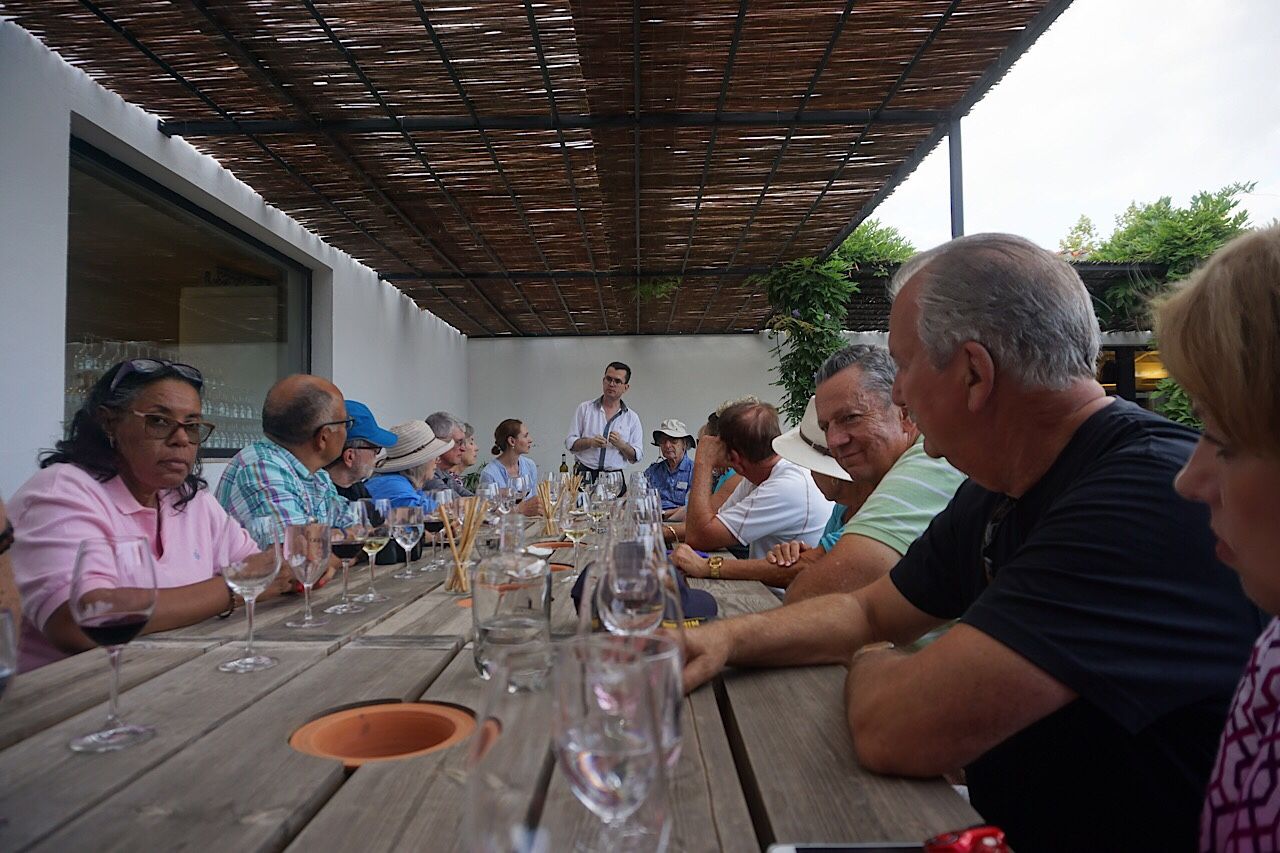

Onto Evora (pronounced EH-vore-ah), another medieval walled town, but much larger than Monsaraz. There are 10,000 people in the walled area of the city, another 40,000 or so outside. A little touristy, but the town looks very charming and we look forward to exploring tomorrow. Our Pousada used to be a convent of the monks of St. Francis. Rooms are pretty small, with charming baths (it was originally established in 1485) and although the rooms, or cells are the original size, thankfully it was updated into a Pousada in 1965. By the way, in Portugal, the term "convent" can refer to a religious order of men or women - a monastery is just a large convent.
We enjoyed a Portuguese tapas style dinner at the Pousada and after trying to get our suitcases to open in the room, fell into bed.

comments powered by Disqus